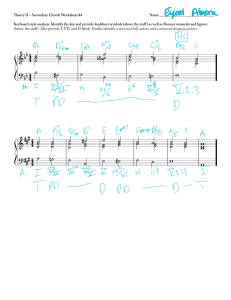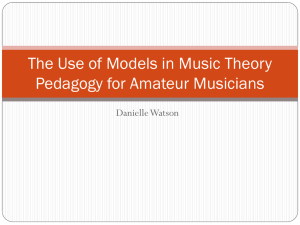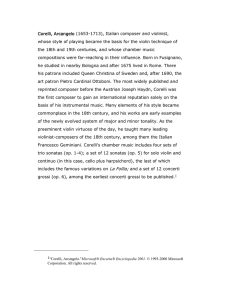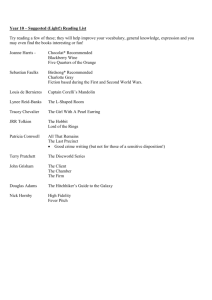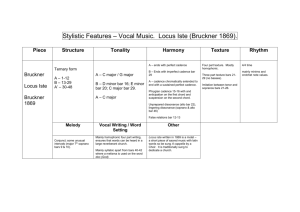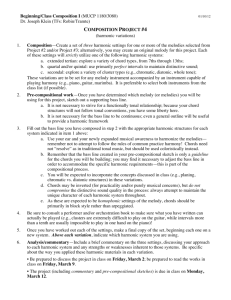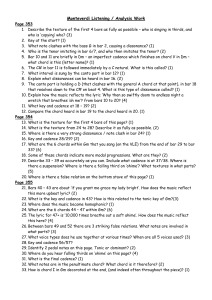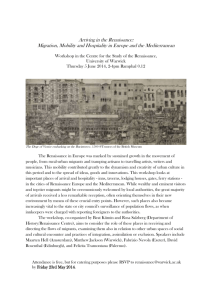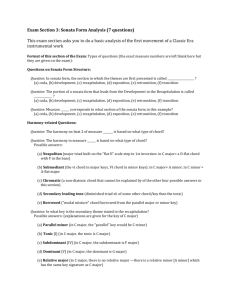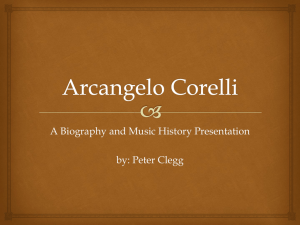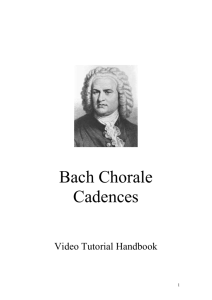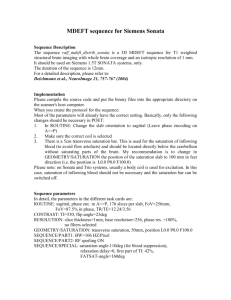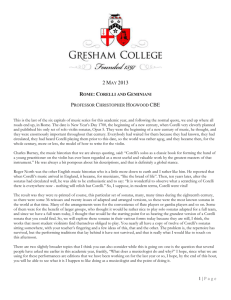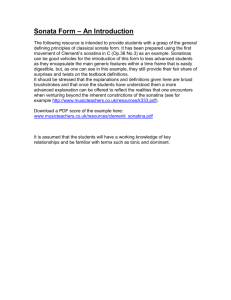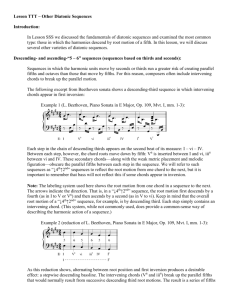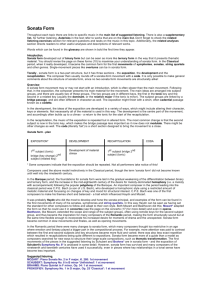Corelli: Trio Sonata in D, 4th movement (p
advertisement
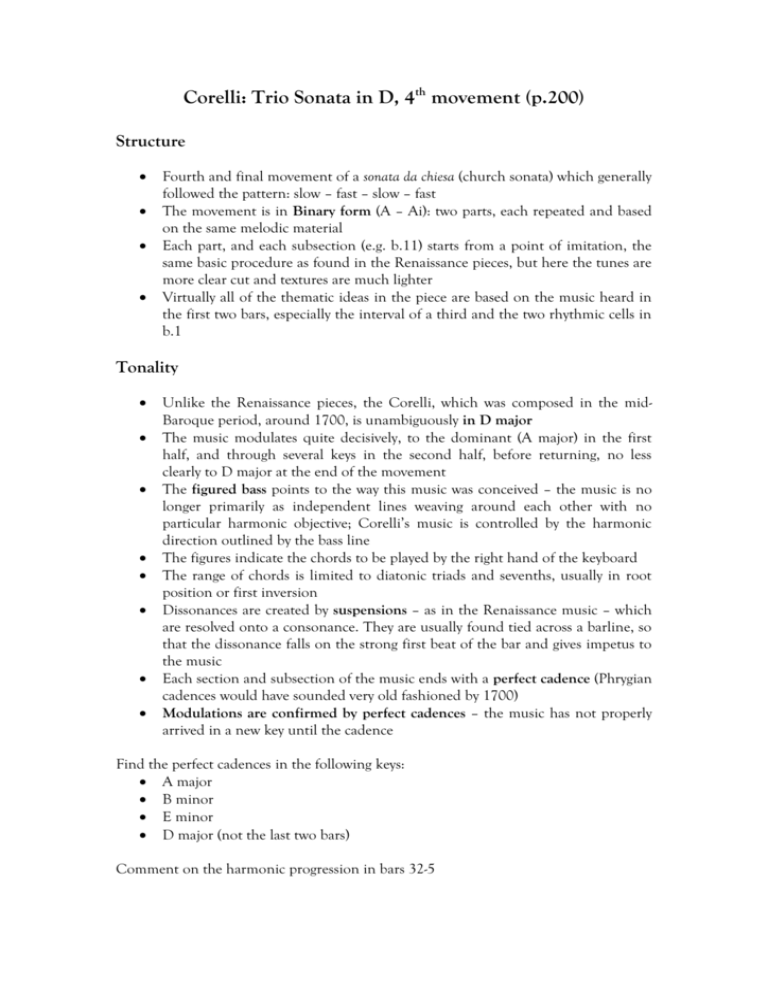
Corelli: Trio Sonata in D, 4th movement (p.200) Structure Fourth and final movement of a sonata da chiesa (church sonata) which generally followed the pattern: slow – fast – slow – fast The movement is in Binary form (A – Ai): two parts, each repeated and based on the same melodic material Each part, and each subsection (e.g. b.11) starts from a point of imitation, the same basic procedure as found in the Renaissance pieces, but here the tunes are more clear cut and textures are much lighter Virtually all of the thematic ideas in the piece are based on the music heard in the first two bars, especially the interval of a third and the two rhythmic cells in b.1 Tonality Unlike the Renaissance pieces, the Corelli, which was composed in the midBaroque period, around 1700, is unambiguously in D major The music modulates quite decisively, to the dominant (A major) in the first half, and through several keys in the second half, before returning, no less clearly to D major at the end of the movement The figured bass points to the way this music was conceived – the music is no longer primarily as independent lines weaving around each other with no particular harmonic objective; Corelli’s music is controlled by the harmonic direction outlined by the bass line The figures indicate the chords to be played by the right hand of the keyboard The range of chords is limited to diatonic triads and sevenths, usually in root position or first inversion Dissonances are created by suspensions – as in the Renaissance music – which are resolved onto a consonance. They are usually found tied across a barline, so that the dissonance falls on the strong first beat of the bar and gives impetus to the music Each section and subsection of the music ends with a perfect cadence (Phrygian cadences would have sounded very old fashioned by 1700) Modulations are confirmed by perfect cadences – the music has not properly arrived in a new key until the cadence Find the perfect cadences in the following keys: A major B minor E minor D major (not the last two bars) Comment on the harmonic progression in bars 32-5
